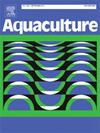欧盟的水产养殖生产情况如何?调查其停滞和可持续性
IF 3.9
1区 农林科学
Q1 FISHERIES
引用次数: 0
摘要
尽管近几十年来全球水产养殖生产在产量增长方面取得了巨大成功,但包括欧洲 联盟(欧盟)在内的大多数发达国家并未在很大程度上参与这一发展。早在上世纪七十年代,一些欧盟国家在水产养殖生产方面就处于全球领先地位,主要集中于贻贝和牡蛎等滤食性水产。然而,在过去几十年里,欧盟的水产养殖生产基本上停滞不前。尽管过去三十年来欧盟在政治支持、投资和研究方面做出了努力,但环境法规和与其他活动的竞争在许多情况下减缓甚至停止了生产增长。欧盟最近旨在促进粮食安全和可持续粮食系统的立法承认水产养殖是一个主要的潜在贡献者,例如侧重于可持续或低环境影响的水产养殖,如低营养级物种的生产。在此背景下,本文旨在通过研究生产停滞及其原因,加深对欧盟水产养殖业的理解。我们研究了欧盟水产养殖产量在重量和价值方面的演变,以及其平均营养级、长度和生产物种的多样性。结果表明,在过去二十年中,生产物种的多样性有所增加,但低营养级物种的产量有所下降,而更具挑战性的高营养级物种有所增加,从而提高了生产的总体平均营养级。贻贝和牡蛎产量下降的主要原因是环境因素,其次是经济因素。自 2000 年以来,鲷鱼、鲈鱼和鲑鱼等肉食性鱼类的快速增长已经放缓,这主要是由于旨在限制环境影响的法规所致。本文章由计算机程序翻译,如有差异,请以英文原文为准。
What is happening to the European Union aquaculture production? Investigating its stagnation and sustainability
While global aquaculture production has been highly successful in terms of production growth in recent decades, most developed countries including the European Union (EU) have not participated in this development to a significant extent. As recently as the 1970s, several EU countries were global leaders in aquaculture production, primarily focusing on filter feeders such as mussels and oysters. However, aquaculture production in the EU has largely stagnated over the past few decades. Despite political support, investment and research efforts over the last three decades, environmental regulations and competition with other activities have slowed down or even halted production growth in many cases. Recent EU legislation aimed at boosting food security and sustainable food systems, recognise aquaculture as a major potential contributor, focusing for example on sustainable or low environmental impact aquaculture, e.g. the production of low trophic level species. In this context, this article aims to contribute to the understanding of the EU aquaculture sector by examining the stagnation in production and its causes. We investigate the evolution of the EU aquaculture production in weight and value, as well as its average trophic level, length and diversity of the species produced. Results indicate an increase in the diversity of species produced, but a decline in the production of low trophic level species over the last two decades, and an increase in more challenging high trophic levels species, raising the overall average trophic level of the production. The decline in mussel and oyster production is mainly due to environmental and, to a lesser degree, economic factors. The rapid growth of carnivorous fish, such as seabream, seabass and salmon has slowed down since 2000, mainly due to regulations aiming at limiting environmental impacts.
求助全文
通过发布文献求助,成功后即可免费获取论文全文。
去求助
来源期刊

Aquaculture
农林科学-海洋与淡水生物学
CiteScore
8.60
自引率
17.80%
发文量
1246
审稿时长
56 days
期刊介绍:
Aquaculture is an international journal for the exploration, improvement and management of all freshwater and marine food resources. It publishes novel and innovative research of world-wide interest on farming of aquatic organisms, which includes finfish, mollusks, crustaceans and aquatic plants for human consumption. Research on ornamentals is not a focus of the Journal. Aquaculture only publishes papers with a clear relevance to improving aquaculture practices or a potential application.
 求助内容:
求助内容: 应助结果提醒方式:
应助结果提醒方式:


